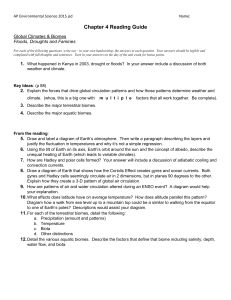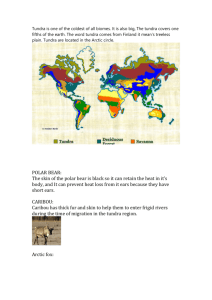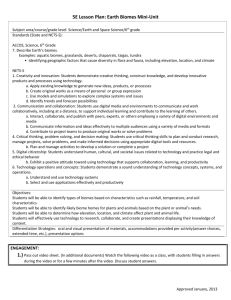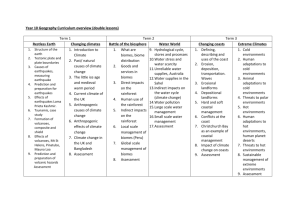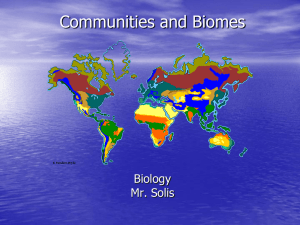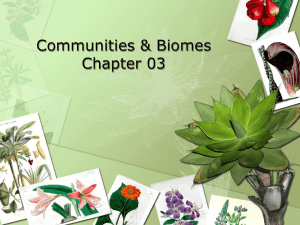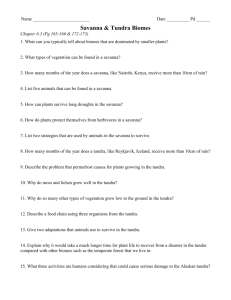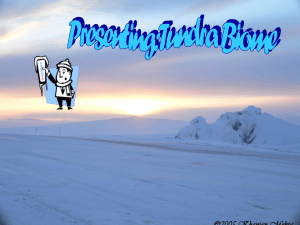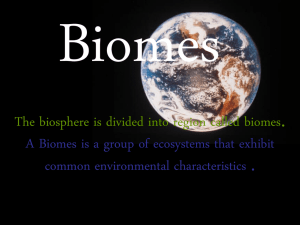Polar Grasslands-1
advertisement
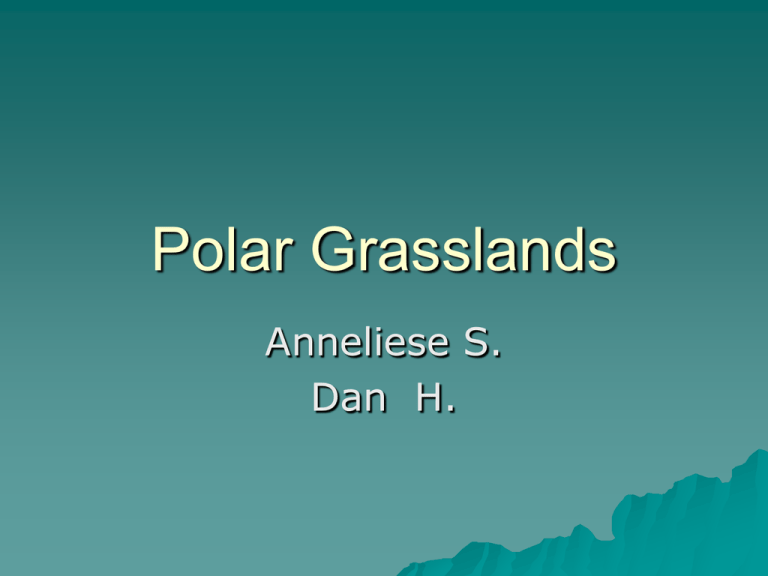
Polar Grasslands Anneliese S. Dan H. Climate Characteristics Average Winter Temperature: -28° C Average Summer Temperature: 312° C Small temperature range due to extremely cold temperatures throughout the year http://earth.rice.edu/mtpe/bio/biosphere/topics/biomes/biomes_map_final.gif Climate Characteristics Annual Precipitation: 15-25cm -Including melting snow Limiting Factors: -Wind: 30-60 mph -Winter throughout most of the year -Permafrost (frozen ground throughout the year) http://environment.nationalgeographic.com/environment/photos/tundra-landscapes/beechey.html Flora and Fauna Flora (plants) – Grasses, sedges, heather, mosses, and lichens. Fauna (animals) – Seals, penguins, arctic foxes, caribou, snowshoe rabbit, and polar bears. http://environment.nationalgeographic.com/environment/enlarge/polarbeartundr a.html Adaptation Plant adaptation – Can survive in high winds, freezing temperatures, and little sunlight. Animal adaptation – Paws – White Fur – Thick fat, fur, or blubber Biodiversity Very low biodiversity 1,700 species of plants Only 48 land mammals. Many insects and birds migrate annually. Biomass Pyramid References Regents of the University of California. (2008) The Tundra Biome. Retrieved October 17, 2008 from University of California Berkeley http://www.ucmp.berkeley.edu/exhibits/biomes/tundra.php Rob Nelson. (2003) Arctic Tundra. Retrieved October 17, 2008 from The Wild Classroom. http://www.thewildclassroom.com/biomes/arctictundra.html Madhavi Ghare.(2008) Tundra Climate Facts. Retrieved October 17, 2008 from Buzzle. http://www.buzzle.com/articles/tundraclimate-facts.html “How are the biomes distributed?” (http://earth.rice.edu/mtpe/bio/biosphere/topics/biomes/biomes_ map.html) “Beechey Island” (http://environment.nationalgeographic.com/environment/enlarge /beechey.html) “Tundra with Polar Bear” (http://environment.nationalgeographic.com/environment/enlarge /polarbeartundra.html)

